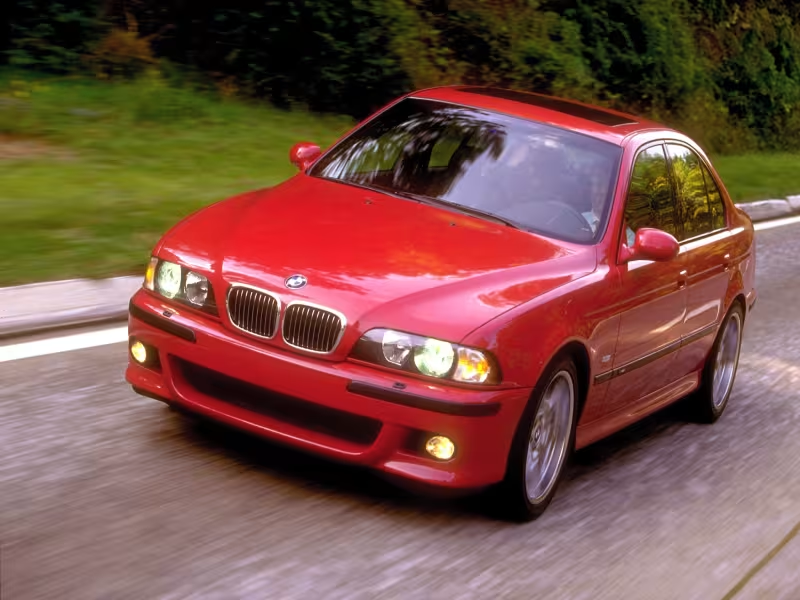
SHERIDAN, WYOMING – Sep. 23, 2025 – In the world of high-performance sedans, few cars have etched themselves into automotive history quite like the BMW E39 M5. Launched in the late ’90s, it didn’t just deliver jaw-dropping specs—it redefined what an executive sports sedan could be, blending daily comfort with race-bred excitement, all wrapped in understated elegance.
The V8 That Almost Wasn’t
Hard to imagine today, but back in the early ’90s, BMW wasn’t even sure if the M5 should continue—especially in the U.S. market. Previous M cars like the E34 M5 had been slow sellers, thanks to their complex engineering and high price. And when it came time to design the E39 M5, BMW’s M division had a tough choice: stick to tradition with a turbocharged inline six or break new ground with a V8.
After two years of heated internal debate, the V8 won. “We wanted to create a sports car for gentlemen, and the V8 was a natural choice,” said E39 M5 project leader Alex Hildebrandt. It was a decision that would not only transform the M5—it would ultimately define BMW M’s future.
Engineering Meets Emotion
Rather than develop a new engine from scratch, BMW’s engineers supercharged (figuratively) the M62 V8 into the mighty S62. Here’s what made it special:
- 5.0-liter displacement with individual throttle bodies for each cylinder
- 400 horsepower and 368 lb-ft of torque
- A redline boosted to 6,600 rpm—rare for a V8 at the time
- Precision oil system to withstand hard cornering
- Electronic servomotor for throttle control, cruise, and idle
It wasn’t just about raw numbers. The M5’s S62 engine was soulful—responsive, eager, and full of character. And when paired with the buttery Getrag six-speed manual, it offered something today’s paddle-shifted world rarely replicates: pure driving connection.
Luxury, But Make It Lethal
Inside, the E39 M5 felt more executive than edgy—until you put your foot down. The cabin came loaded with heated sport seats, Xenon headlights, and a sleek navigation system, all standard. The subtle aero tweaks, 18-inch M wheels, and discreet quad exhausts whispered performance rather than screamed it.
This was the magic of the E39 M5: its ability to blend seamlessly into a corporate parking lot one moment and dominate the Nürburgring the next.
Why It Mattered Then—and Still Does
At a time when rivals like the Mercedes E55 and Jaguar XJR were flirting with automatic-only power and soft-luxury comfort, BMW doubled down on driver engagement. As M Brand Manager Tom Salkowsky put it, “The pairing of a manual transmission and nearly 400 horsepower was pure magic.”
BMW even sweetened the deal by including a full-day driving course at its Performance Center in South Carolina with every purchase. For many buyers, this hands-on experience cemented their emotional connection to the car—and the brand.
Editorial Extra: Quick Comparison – Then vs. Now
E39 M5 (1999–2003):
- 400 hp / 368 lb-ft torque
- 6-speed manual only
- 0–60 mph in 4.8 seconds
- Subtle styling, analog feel
- $69,500 MSRP (then)
G60 M5 (Today):
- Over 700 hp (hybrid V8)
- Automatic only
- 0–60 mph under 3.5 seconds
- Aggressive styling, tech-heavy
- Over $120,000 MSRP
The E39 was the “driver’s choice”; the G60 is the “technology tour de force.” Both brilliant, but very different in philosophy.
The Legacy Lives On
By the time production ended in 2003, U.S. customers had scooped up nearly half of the 20,482 E39 M5s built—an incredible feat for what was once a risky project. It proved the American appetite for precision-tuned performance, wrapped in executive style, was stronger than ever.
Perhaps most significantly, the E39 M5 helped secure the future of BMW’s M division. Its V8 didn’t just power a sedan—it fueled a movement.
Learn more about BMW’s 50-year journey in North America at www.bmwusa.com.